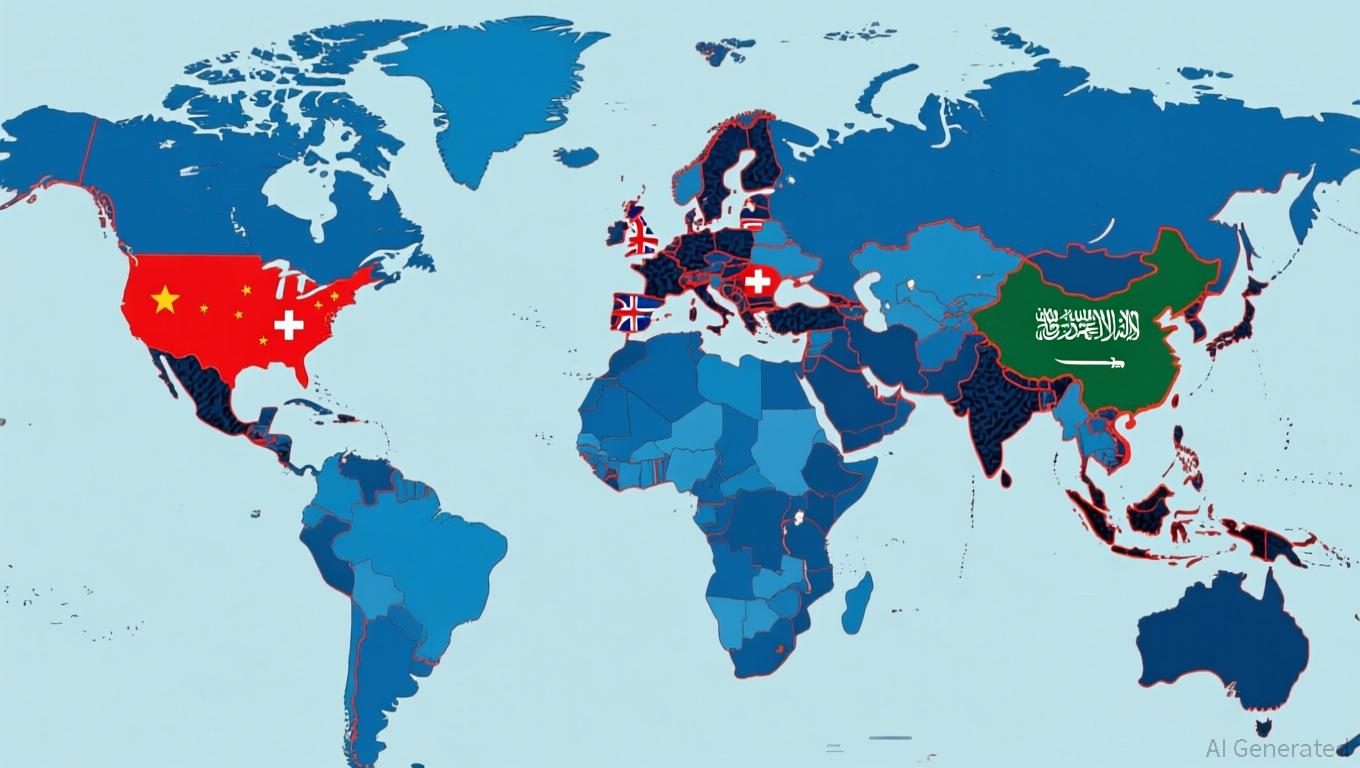From Expense to Asset: GoPlus's Security Fund Transforms Web3 Efforts into Value
- GoPlus launches 500M GPS Security Fund to monetize Web3 security contributions via market-driven incentives, addressing $157k/second exploit losses. - 400M GPS allocated to staking rewards with triple APY (base yield, safety dividends, buybacks), while 100M GPS funds bounties for security reports and risk alerts. - Stakers govern bounty distribution through community voting, creating quantifiable "security contribution scores" that professionalize threat intelligence as verifiable earnings. - Dynamic rep

GoPlus has introduced a Security Fund valued at 500 million
The staking rewards pool provides three types of incentives: a base annual yield (APY), ecosystem safety bonuses such as token airdrops, and deflationary buybacks of GPS tokens. Those who stake also have a say in how bounty rewards are distributed, thanks to a community governance system. The 100 million GPS bounty pool compensates for security intelligence reports (up to 10,000 GPS per submission) and risk alerts (200–1,000 GPS for each valid report), establishing a measurable "security contribution score." This approach shifts security from sporadic efforts to a structured, incentivized system, where contributions are directly rewarded with tokens and industry recognition $500M GPS Security Fund: Rebuilding the Value Loop of the Web3 [ 2 ].
The fund’s high APY is maintained through adaptive replenishment strategies, open staking information, and scalable token economics. There is a 1:10 safety margin between the 40 million GPS currently staked and the 400 million reward pool, supporting the fund’s longevity. The design avoids speculative bubbles by tying returns to actual growth in security services, including 30 million daily API requests across more than 30 blockchain networks, enterprise-grade security products, and GSM transaction fees 500M GPS Token Security Fund: Rewiring Web3’s Security Value [ 1 ].
This initiative tackles major Web3 security issues like phishing, anti-fraud solutions, and the development of decentralized infrastructure. It also encourages collaboration on projects such as
On a strategic level, the Security Fund represents a new approach to valuing security within decentralized systems. Unlike traditional setups where organizations bear the cost of security, Web3’s decentralized model lets market participants directly benefit from their contributions. This creates a positive feedback loop: more staking boosts confidence in GPS token value, which strengthens security and attracts additional projects and users, further increasing GPS’s utility and worth $500M GPS Security Fund: Rebuilding the Value Loop of the Web3 [ 2 ]. Early participants can earn APYs ranging from 30% to 200%, similar to holding "early equity" in the Web3 security ecosystem 500M GPS Token Security Fund: Rewiring Web3’s Security Value [ 1 ].
The fund’s influence goes beyond financial rewards. For users, staking GPS tokens means actively engaging with security best practices. For security professionals, the bounty system formalizes their work, turning threat intelligence into tangible income. For projects, integrating
Disclaimer: The content of this article solely reflects the author's opinion and does not represent the platform in any capacity. This article is not intended to serve as a reference for making investment decisions.
You may also like
Switzerland Delays Crypto Information Exchange Pending International Coordination
- Switzerland delays crypto tax data sharing with foreign nations until 2027, citing unresolved CARF partner agreements. - The OECD's 2022 framework requires member states to exchange crypto account details, but 75 countries including the EU and UK face implementation challenges. - Transitional measures ease compliance burdens for Swiss crypto firms while awaiting finalized international data-sharing protocols. - Major economies like the U.S., China, and Saudi Arabia remain outside CARF due to non-complian

Bitcoin Updates: SGX Addresses Offshore Perp Shortfall as Bitcoin Decline Increases Demand for Hedging
- SGX launched Bitcoin and Ethereum perpetual futures, becoming a first-mover in regulated onshore crypto derivatives to meet institutional demand. - The $187B/year perp market, dominated by Asia, now gains a regulated alternative to offshore platforms with SGX's 22.5-hour trading window. - Perps enable hedging during Bitcoin's 2025 downturn, with SGX's margin-call system prioritizing investor protection over instant liquidations. - Regulatory caution limits access to accredited investors, aligning with gl

Bitcoin News Update: Institutional ETF Adjustments Challenge Key Bitcoin Support Thresholds
- Analysts warn Bitcoin faces 25% drop risk if key support levels fail amid shifting institutional ETF dynamics. - Texas's $5M IBIT purchase highlights growing government interest, but ETFs fall short of direct BTC ownership criteria. - Technical analysis shows Bitcoin trapped in a broadening wedge pattern, with breakdown below $80,000 risking $53k decline. - Institutional rebalancing sees $66M IBIT outflows vs. $171M FBTC inflows, signaling tactical ETF rotation over accumulation. - Abu Dhabi's $238M ETF

XRP News Today: IMF Cautions That Rapid Tokenized Markets Could Intensify Crashes in the Absence of Regulation
- IMF warned tokenized markets like XRP could worsen flash crashes without regulation, citing risks from decentralized systems lacking traditional safeguards. - Report acknowledged tokenization's potential to cut cross-border payment costs but highlighted volatility risks from rapid liquidity loss seen in crypto markets. - SEC's approval of crypto ETFs signals growing institutional acceptance, though regulators emphasize oversight frameworks to mitigate systemic risks. - IMF proposed a global digital marke
